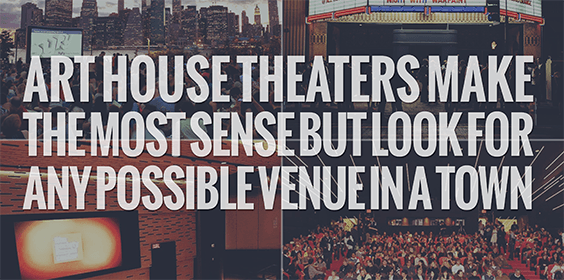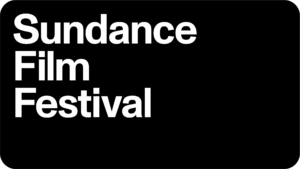Sundance Institute #ArtistServices
Within the past several years, the emergence and maturation of lightweight, user-friendly technology platforms like Quiver Digital, Vimeo, and VHX has made distributing films easier than ever. As new technologies and distribution approaches continue to disrupt conventional release windows, funding cycles, and acquisition deals, how do indie filmmakers navigate this shifting landscape while balancing audience engagement and revenue?
Our #ArtistServices team presented at #SXSW in 2015, and they took a look at the obstacles and opportunities, successes, and failures that come out of self-distribution. Their panel (“Hacking Technology for Your Indie Film Release”) was about what it takes to get your film seen in an overcrowded marketplace by using technology as your secret weapon. These hacks were curated by #Sundance staffer @MissMissyLaney—feel free to share or send your own to artistservices@sundance.org.
1. Schedule preorder windows.
“Offering a preorder window (even if only off your own website) is the best way to capitalize on festival chatter and press reviews. It will put your film on the radar of the retailer marketing departments and will help to make the case for promotion.” — Paul O’Neill of Premiere Digital
2. Avoid December and February.
“If you have flexibility and control in your release date, it may be best to avoid December holidays and February awards season. Digital retailers often give priority placement to higher profile indies during these months and your film, absent a specific and robust marketing plan, could get lost.” — Paul O’Neill
3. Purchase a specific policy that fits your film release plans.
“Curse under your breath and just purchase E&O. You need errors and omissions insurance, especially if you’re planning on launching on Netflix, where a film-specific policy is required. Depending on your plans, you can save money by purchasing a specific policy that fits your film release plans. For example, consider a U.S.-only, digital distribution-only policy through a non-profit artist organization like Fractured Atlas. Legit policies can be had for as low as $1,500—thousands of dollars cheaper than a full policy that you don’t need.” — Chris Horton
4. Don’t limit your theatrical screenings to arthouse theaters.
“Museums big and small often have film series and good projectors. Film societies may have an amazing warehouse. Places like Rooftop Films in NYC put on incredible shows without any walls.” — Mike Plante of Cinemad, the Sundance Film Festival, and Cinelicious
5. Upload final DCP-formatted trailers on Dropbox or Google Drive.
“USB flash drives are the independent exhibitor’s wasteful equivalent of the K cup for coffee drinkers. Upload final DCP-formatted trailers on Dropbox or G Drive and give us the option to download them instead. Your trailer can be on screen that night.” — Toby Leonard of the Belcourt Theatre
6. Do NOT purchase KDMs.
“KDMs (or key delivery messages) are essentially XML files containing encryption keys that can be used only by the destination device. Just keep a detailed record of where your DCPs are at all times, and at which theaters.” — Michael Tuckman of mTuckman Media
7. $250 versus 35%…
“$250 versus 35%—repeat after me. That’s been an art house industry standard and benefits everyone. That’s the cut whether it’s one show or a week of shows. And if it’s a tiny theater that is scared to do a guarantee then that’s fine too, 35% is solid.” — Mike Plante
8. Beware the “virtual print fee.”
“Beware the ‘virtual print fee’—with locally owned theaters, you often don’t have this, but many chain arthouses do. They borrowed money to upgrade to DCP, which is great, but every film they play has to pay another company $300 per week to show there no matter what, and that could be your entire split of the box office, so make it worth the effort.” — Mike Plante
9. All screenings are theatrical.
If you premiere at Tribeca, have a friends-and-family screening at a Brooklyn theater, and then an invite-only ‘tastemaker’ screening/premiere in Midtown, your ultimate ‘opening weekend’ in NYC could be poorly attended. Sometimes it’s best to pick your battles based on your ultimate goals. Keep a grid tracking every audience screening for each city, and understand that all screenings are theatrical.” — Chris Horton, former sales agent
10. Be frugal.
“You will likely not need more than 250 theatrical one-sheet posters for a national run, and let’s face it—you’ll still end up with an extra stack in your garage. Be frugal. Don’t go nuts.” — Joseph Beyer, Sundance Institute staffer (who has 121 Primer posters in his garage)
11. Small size matters too.
“Never underestimate the power of the thumbnail image, used by all digital stores. This is often the first experience people have with your film, whether you want to admit it or not.” — Jeremy Boxer, Vimeo
12. Don’t worry about print ads.
“Digital ad buys are way cheaper, and you can track your ROI (return-on-investment) very specifically.” — Mike Keegan, San Francisco creative manager at Alamo Drafthouse
13. Harness internet trends.
“(#TBT) or relevant news (#TheDress) to connect back to the mothership of your content.” — David Charles, director of Mythical Creatures
14. Email subject lines matter.
“Publishers and editors receive hundreds of emails a day, especially during and leading up to a festival. Whether they open the email or not, they will read the subject. Personalize it and be specific. Keep your emails short, and the emails that end in a brief question increase your chances of an immediate response. For example, ‘SXSW Panel Pitch: Crowdfunding, Reporter’s Name.'” — Jessie Cohen
15. Tweet at people who just tweeted.
“Make a Twitter List of people you want to target for social support, and monitor that list. Tweet at them right after they tweet—it means they’re on their phone, right this second, and they’re far more likely to respond or RT your project.” — Ryan Koo, No Film School
16. Email lists are still golden.
“Email is still the most direct way to reach people and converts three times better than social media. Build your website to have a splash page (like Upworthy’s) where fans can enter their email to sign up for alerts. We like NationBuilder.” — Tiffany Shlain and Sawyer Steele of The Moxie Institute Film Studio + Lab
17. Upload content natively to each social platform.
“To boost social engagement, upload content natively to each social platform. On Facebook, posts with photos receive 50% more likes, and posts with native videos receive 75% more interactions. On Twitter, tweets with photos boost engagement by 35%, and tweets with video boost engagement by 28%.” — Michael Latt, Sundance Institute social media
18. Better bundle for bigger bucks.
“Filmmakers who create meaningful bundles and tiered pricing sell DOUBLE the amount than filmmakers who offer only a single product price point. Packaged content definitely moves the needle.” — Ryan Delk and Jessica Jalsevac of Gumroad
19. Create private Vimeo screeners.
“Even when working with partner organizations, universities, and/or brands in securing nontheatrical screenings, share your private Vimeo link. Mailed DVDs can get scratched, lost, and rack up expenses. Not to mention that most partners prefer to watch links versus DVD screeners.” — Bethany Clarke, Film Forward
20. Growth-hack your backer rewards.
“After a crowdfunding campaign, some backers get a copy of the movie as their reward. Even though they don’t need to buy a copy, they’re still invested! Give them opportunities during rewards fulfillment to buy more (discounts on merchandise, bonus content, etc.), or include a coupon they can share with a friend to expand your audience.” — Alexandra Marvar, VHX
21. Carve out rights to do traditional digital and direct-to-fan deals on your own.
“A sales agent is usually the most valuable asset for doing sales out of a major festival. But these deals have a shelf life. If it’s six months after your premiere and there’s not a lot of movement, you might be restricted in your ability to do a creative digital deal on your own. Push for shorter terms and carve out your rights to do traditional digital and direct-to-fan deals on your own.” — Chris Horton
22. Ask distributors about their digital economics.
“If your film is acquired by an all-rights/theatrical distributor, there’s an excellent chance it will be released day-and-date. Fifty percent of films from the 2014 Sundance Film Festival were. Ask distributors about their digital economics. Ask them 1) “Do you have direct deals with iTunes and Netflix?” and 2) “What distribution fees do you take from revenue that comes in from iTunes and Netflix”? If the answer to the first question isn’t a quick “yes” and the answer to question two seems quite high or sounds murky, you ought to consider other options or do a creative release on your own.” — Sundance Institute Artist Services
23. Pay for a quality closed-caption file.
“Closed captions are now a required deliverable, so build costs into your post budget. If you receive a quote from a post house that is too good to be true, it probably is. In creating the file, they will cut corners, e.g., there won’t be any sound cues, action noise, or off-screen narration. Pay for a quality closed-caption file (we’ve found that costs from reputable post houses range from $4 to $7 per minute).” — Missy Laney, #ArtistServices




